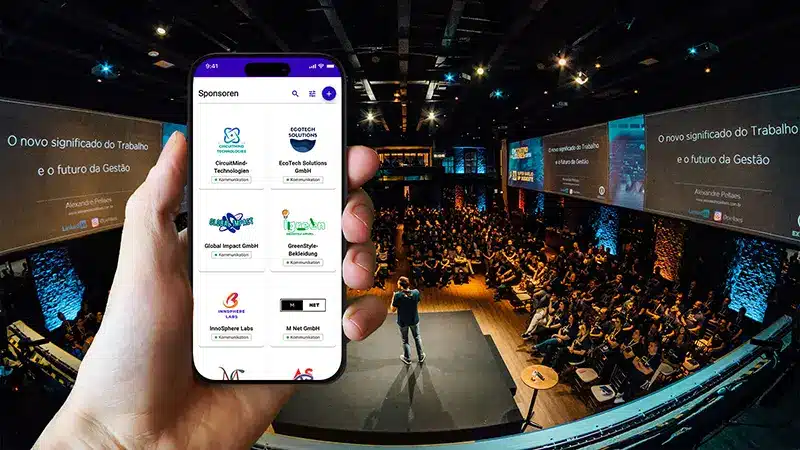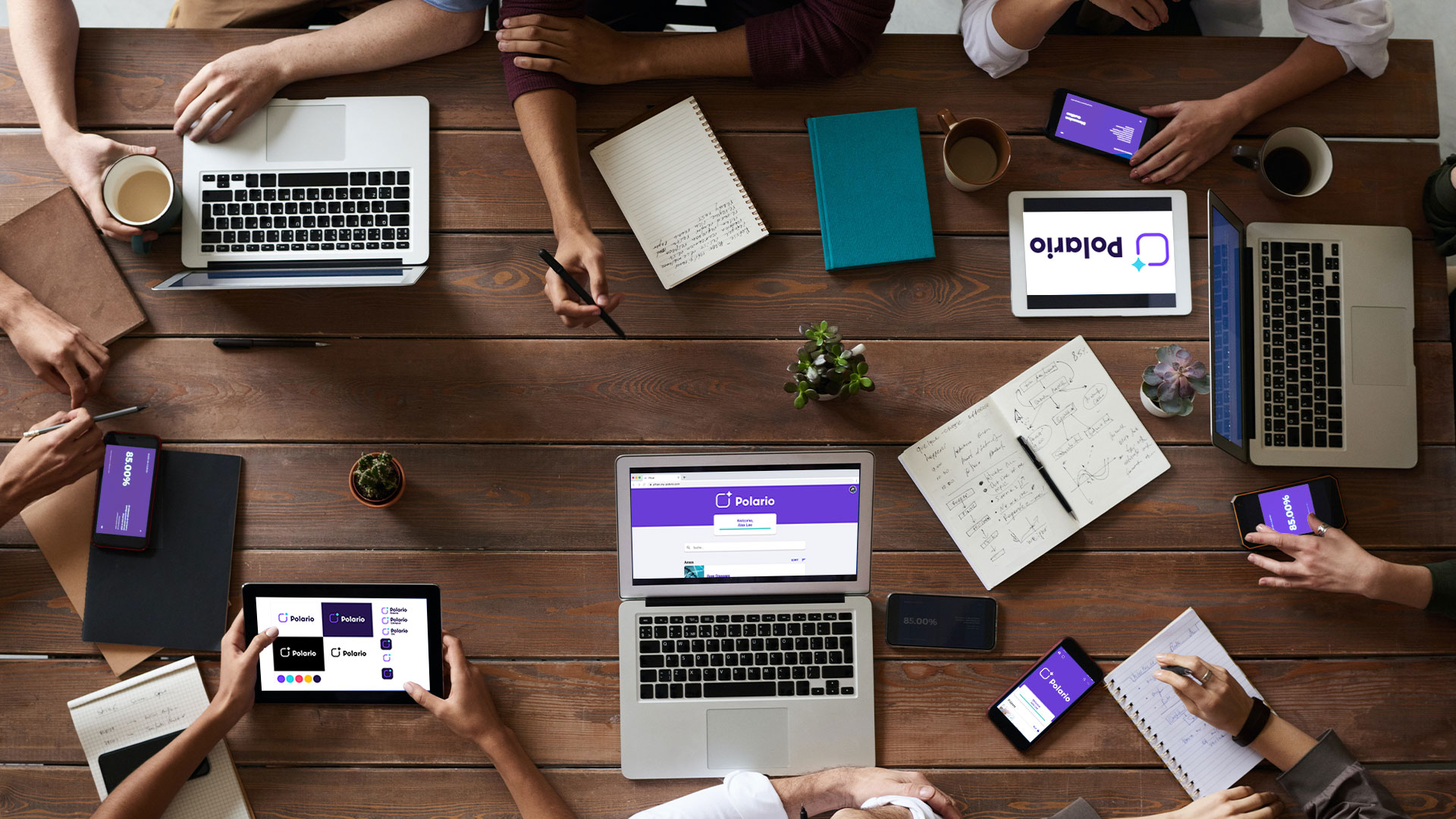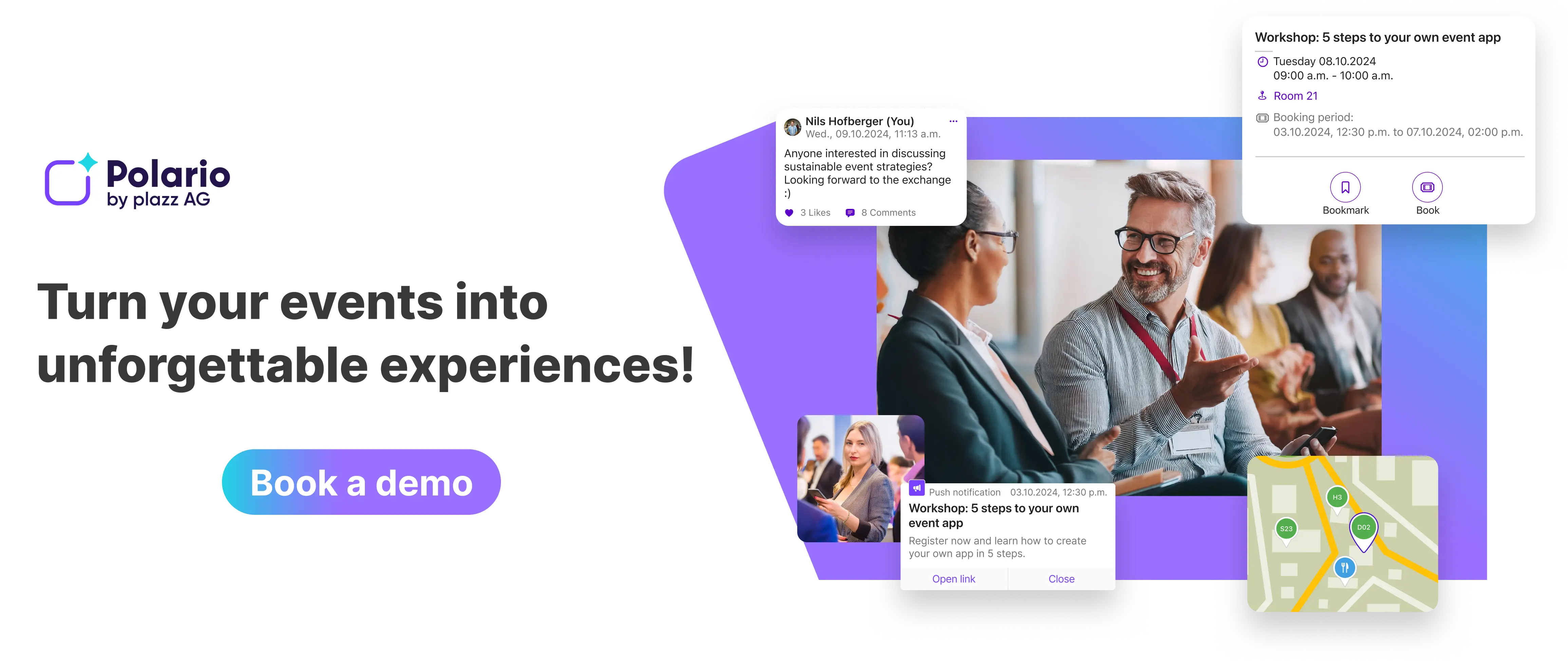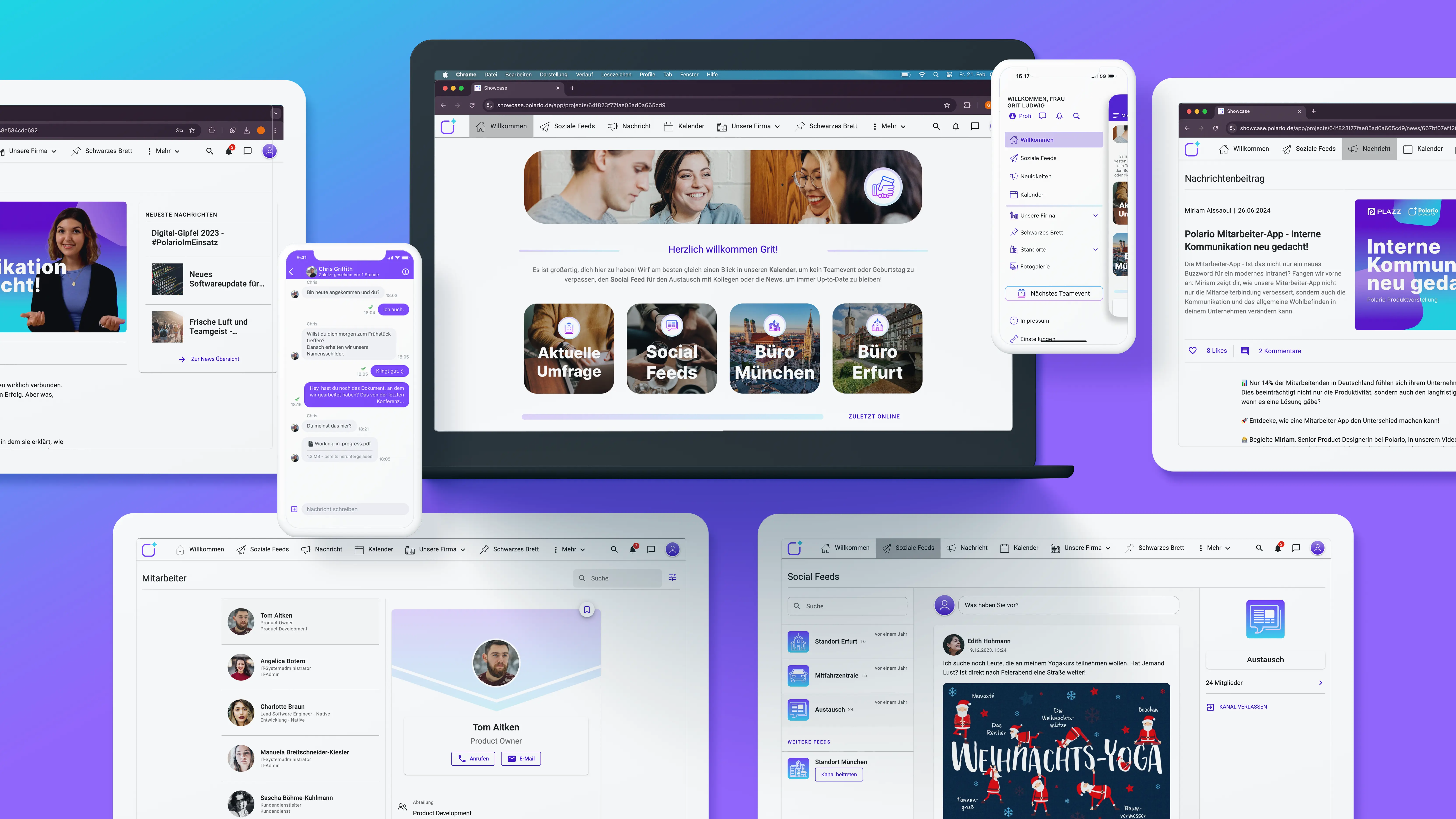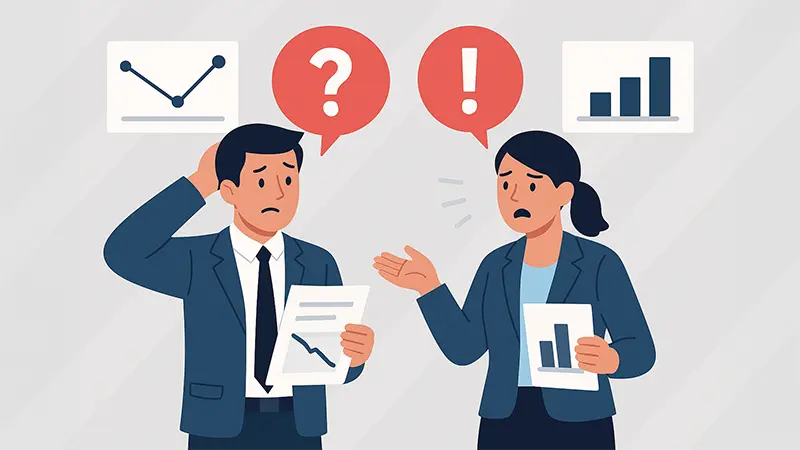Today’s events are smart, networked and personalised – and this is exactly what is changing sponsorship: it is becoming more digital, dynamic and measurable than ever before. Traditional sponsorship models are reaching their limits – too inflexible, too intransparent and often difficult to measure. This is precisely where modern sponsorship apps come in: They are revolutionising event marketing, bringing organisers and sponsors together efficiently and enabling new forms of brand presence.
Whether it’s a music festival, conference or sporting event – event sponsorship via app creates added value on all sides. For companies, it means targeted reach, measurable results and creative advertising opportunities. For event organisers, it saves time, increases visibility and generates new sources of income. In this article, we show you how app-based sponsorship works, which tools are really convincing and why it is shaping the future of the event industry.
Introduction to modern event sponsoring
What is event sponsoring?
Event sponsorship describes the financial or in-kind support of events by companies in return for visibility, advertising opportunities and brand positioning. Whether at concerts, trade fairs, conferences or sporting events – sponsors gain access to defined target groups in a suitable environment through targeted placement of their brand.
Why digitise sponsoring?
Digitalisation is also bringing revolutionary changes to sponsorship. Traditional methods such as personal networks or mass emails are giving way to modern technologies that make processes more efficient, transparent and scalable. An app-based solution allows suitable partners to be found more quickly, sponsorship packages to be configured, contracts to be signed digitally and effectiveness to be analysed directly. This makes sponsorship not only more accessible, but also more measurable.
The role of mobile apps in event marketing
Development and trends
Mobile applications have long been an integral part of event marketing. From registration to interaction during the event – almost every touchpoint now runs via the smartphone. This development also opens up new opportunities for sponsorship: Apps are not only platforms for communication, but also for targeted brand staging.
Advantages of mobile technologies for event organisers
Mobile apps open up completely new possibilities for event organisers to realise events more efficiently, interactively and successfully. They serve as a central control and communication platform – before, during and after the event.
This is what an event app for organisers offers in detail:
- Direct integration into the event programme: Schedules, changes and highlights can be shared with participants in real time via the app - without notices or loudspeaker announcements.
- Countless digital presentation options: Organisers can provide interactive content, such as digital surveys, polls, gamification elements or video messages.
- Continuous contact with the audience: push messages, feedback functions and reminders keep communication with visitors going even after the event - perfect for community building or follow-up campaigns.
- Central data administration and participant management: registrations, check-ins, participant statistics and feedback can be bundled and clearly managed - this saves an enormous amount of organisational effort.
- Less paper, more sustainability: digital tickets, agendas, brochures and exhibitor directories replace printed material - this reduces costs and is environmentally friendly.
With mobile technologies, organisers gain control, flexibility and measurable results – with reduced workload and improved user experience.
Advantages of mobile technologies for participants
Not only organisers and sponsors benefit from event apps – participants also experience numerous advantages through mobile technologies that take their event experience to a new level:
- Personalised content: Apps enable an individual agenda with a favourites function, reminders and recommendations based on personal interests.
- Easy navigation: Interactive site plans, directions and exhibitor lists help you to find your way quickly - a real advantage, especially at large events.
- Direct communication: Participants can use the app to ask questions, answer surveys or take part in discussions - in real time and without queues.
- Networking functions: Matchmaking tools, participant lists or in-app chat help you to make new contacts - both professionally and privately.
- Access to exclusive content: Sponsor videos, live streams, digital goodie bags or discount codes offer added value and make the event more interactive.
How does event sponsorship via app work?
Digital advertising space
Modern event apps offer versatile digital advertising space for sponsors:
- Home page banner
- Push notifications
- Sponsor slots in the event programme
- Product placements in interactive maps or event guides
- Entry in the sponsor directory
- Integration of interactive advertising media (quizzes, competitions, etc.)
These digital advertising spaces can be targeted and offer high visibility with measurable results.
Advantages for sponsors
Direct access to target groups
Apps enable the targeted placement of advertising messages. Sponsors can use registration, usage behaviour and feedback from participants to target their content – without wastage.
Reduced wastage and measurable results
While traditional sponsorship measures are often difficult to measure, apps deliver:
- Reach statistics
- Click and engagement figures
- Linking with UTM tracking or CRM systems
Advantages for organisers
More sponsors, less effort
App solutions make it easier for event organisers to approach and attract new sponsors. Matching systems and automatically generated sponsorship proposals simplify the process considerably.
Automated reporting and analysis
Apps record all relevant key figures automatically. This saves time during follow-up and makes it easier to provide sponsors with transparent reports – a plus point for follow-up collaborations.
Case studies of successful app sponsorship campaigns
Trade fairs
A start-up trade fair organiser uses an event app to offer targeted sponsorship opportunities to local banks. In-app surveys and competitions led to over 100 leads per sponsor.
Business conferences
Sponsor logos were placed prominently in the agenda app at an international marketing conference. By integrating a ‘contact us’ function, B2B sponsors achieved up to 40% more conversations on site.
Cultural events
A regional music festival integrated drinks partners into the app. Visitors were able to find out about offers directly and take part in a competition using QR codes - with over 2,000 scans in two days.
Event sponsoring via Polario
Polario is our versatile platform for event and community apps that makes it possible to realise impressive use cases. With Polario, you can create virtual, hybrid and live events that inspire your audience. Our solution offers a variety of features to maximise communication and interaction with your audience or community. Thanks to its high level of customisability and flexibility, you can realise your projects exactly as you want. Our user-friendly no-code platform makes this easy and engaging.
Advertising space
Polario offers flexible and intuitive advertising options:
- Home page integration
- Integration on all other pages in various formats
- Agenda sponsoring in the title, description, image and more.
- Push notifications
- Content branding (e.g. for sessions or exhibitor lists)
Cost models
You can create your own cost models in Polario. Here are some models that have been successfully realized by our customers so far.
- Fixed prices per advertising space
- Flat-rate sponsorship packages
- Success-based models depending on target
Sponsors can choose the right model depending on their budget and objectives – also attractive for smaller companies.
Event sponsorship and ROI: What’s the real benefit?
Measurement methods
One of the greatest strengths of app-based sponsorship solutions is their precise measurability. Various metrics can be recorded automatically and in real time:
- Number of clicks on banners and adverts
- Participation in sponsored surveys or competitions
- Scans of QR codes
- Number of leads or downloads generated
This information enables a well-founded evaluation of the performance of individual measures – a quantum leap compared to traditional forms of sponsorship.
Key performance indicators in sponsoring
The decisive KPIs (Key Performance Indicators) vary depending on the objective. These include
| Objective | Relevant key figures |
| Brand awareness | Impressions, reach, branding interactions |
| Lead generation | Number of new contacts, qualified leads |
| Sales promotion | Voucher redemptions, direct purchases, upsells |
| Engagement | click rate, participation in campaigns, social shares |
Sponsors thus receive a transparent ROI (return on investment) and can adapt their strategies based on data.

Discover 10 networking ideas to make your events a complete success. Increase the interaction of your participants.
Legal and organisational framework conditions
Contracts and data protection
Digital sponsorship is also subject to legal requirements. Particularly relevant:
- Data protection in accordance with GDPR: Personalised advertising requires the explicit consent of app users.
- Transparent data processing: The way in which data is used must be disclosed.
- Digitally regulate contracts: Sponsoring apps should integrate functions for legally compliant contract processing (e.g. digital signatures).
With Polario, we naturally offer you a GDPR-compliant solution. In addition to a detailed order data processing contract (DPA), we also offer you competent contact persons on the subject of data protection and data security.
Compliance and brand guidelines
Both organisers and sponsors must pay attention to compliance. This includes, among other things:
- CI specifications (corporate identity)
- Labelling requirements for advertising
- Exclusivity agreements
Tips for a successful sponsorship strategy via app
Target definition
Before the first sponsorship enquiry is sent out, the objective should be clearly formulated:
- Do you want to increase reach, leads or sales?
- Which target group is relevant?
- What period of time is available?
A clear target definition makes it much easier to select an app and find a partner.
Suitable choice of partner
Success in sponsorship depends heavily on the quality of the match. Criteria for partner selection:
- Overlap of target groups
- Thematic proximity to the event
- Brand values and image
Good apps offer matching algorithms that make suitable suggestions based on these criteria.
Creative activations
Sponsorship only comes to life through creative involvement. Examples:
- In-app competitions with branded items
- Live voting presented by a sponsor
- Gamification: Collect points and redeem them with a sponsor
The more eventful the sponsorship, the better the perception and the conversion rate.
Common mistakes and how to avoid them
Lack of target group knowledge
If you don’t know your target group exactly, you risk making expensive bad investments. Therefore:
- Carry out target group analysis
- Define personas
- Use app functions for data analysis
Inadequate communication
A frequent stumbling block is the lack of coordination between organiser and sponsor. This can be remedied:
- Checklists for both sides
- Central project overview in the app
- Regular status updates and milestones
Event sponsorship for small organisers – how to do it on a small budget
Micro-sponsoring
Even with a small budget, companies can support events. Examples:
- Local partners make donations in kind (e.g. drinks, technology)
- Small businesses place favourable in-app advertising
- Co-operation with schools, clubs or NGOs
Apps make it possible to handle small sponsorships easily and make them visible.
Local partnerships
Regional sponsors are often more interested in smaller, local events than large corporations. Advantages:
- Short communication channels
- Greater interest in community events
- Long-term loyalty potential
Conclusion: Why event sponsorship via app is the future
Apps are revolutionising event sponsorship in a holistic way: They enable a targeted, data-based selection of sponsors that are the perfect fit for the event and target group. Automated processes and transparent communication allow for efficient coordination, contract conclusion and approval – time-saving, error-free and traceable. At the same time, digital platforms create new opportunities to make sponsorship creative and interactive, for example through personalised content, in-app competitions or live features. Success is not only visible, but also measurable – in real time and with specific key figures.
For organisers, this means: more time for content and conception, less effort for administration and coordination. For sponsors, it offers significantly greater accuracy, less wastage and meaningful results. Event sponsorship via app is not a trend – it’s the new standard.
Frequently asked questions (FAQ) about event sponsorship
What types of events are suitable for app sponsorship?
Almost all of them: conferences, trade fairs, festivals, sporting events and cultural events – provided there is a digital component (app or web portal).
What does sponsorship via an event app cost?
The costs vary depending on the app, reach and sponsorship format. There are offers from a few hundred euros up to several thousand for premium packages.
As an organiser, do I have to have my own app programmed?
No. There are ready-made platforms such as Polario that have integrated sponsoring functions.
Is event sponsoring possible in compliance with GDPR?
Yes, provided that transparent data protection guidelines, consents and secure data processing are guaranteed.
How do I measure the success of my sponsorship?
Via click numbers, leads, interactions, voucher redemptions or even feedback forms within the app.
